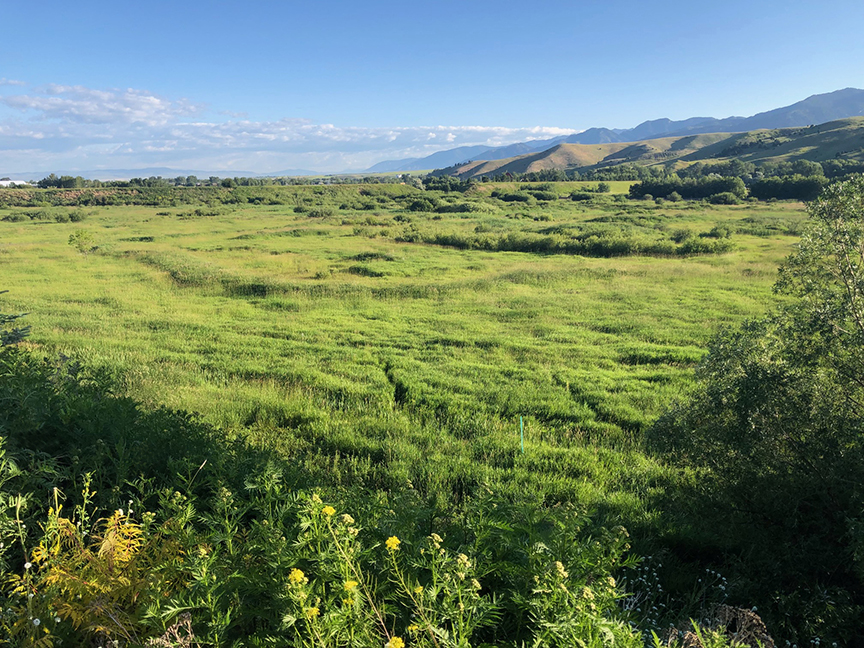Wetlands are some of Gallatin County’s most valuable real estate. Protecting them is essential to the longterm health and prosperity of our communities. Sacajawea Audubon Society (SAS) is shining a spotlight on the role wetlands play in a sustainable Gallatin Valley future. Almost 50 years ago, Congress passed many of the nation’s federal environmental laws. One of the hallmarks of these laws is the growth of permitting programs. Acknowledging that a halt to all pollution and development was both impractical and undesirable, governments developed programs to minimize, monitor, and mitigate environmental harms. Mitigating wetland harm falls under Section 404 of the Clean Water Act, allowing permittees permission to alter wetlands in exchange for promises to mitigate harm from that wetland alteration.
Unfortunately, many of the wetlands in Bozeman and the Gallatin Valley have been harmed or lost to development. As it stands, the lion’s share of mitigation for our destroyed wetlands are replaced in a private “wetland bank” that is in a watershed outside the Gallatin Valley. Whenever this happens, the Gallatin Valley community forever loses these critical natural resources and the economic value they hold.
SAS’s goal is to contribute to wetland conservation in the Gallatin watershed. The Indreland Audubon Wetland Mitigation Bank will help us reach this goal in three ways:
Economical
- Creates an economic incentive for restoring, creating, enhancing, and conserving wetlands
- Ensures the dollar value is retained within the community of the impacted watershed
- Maintains natural drought, flood, and water quality protection within our community
- Contributes to a vibrant cityscape that makes Bozeman an attractive place to live and visit
- Supports the health of a Blue Ribbon Fishery, a cornerstone of Gallatin Valley’s economy
Ecological
- Promotes diverse habitat and wetland functions to create a more sustainable ecosystem
- Protects a wildlife corridor through an urban environment
- Contributes to aquifer recharge and late-season instream flows to the East Gallatin River
- Sequesters carbon in saturated wetland soils
Educational
- Encourages critical thinking about clean water
- Promotes understanding of the importance of wetlands
- Promotes understanding of mechanisms that protect wetlands
- Inspires future sustainable urban planning
- Cultivates a love of nature
SAS continues to move forward in creating a local “wetland mitigation bank.” Currently, we are in Phase II. The Army Corps of Engineers submitted the IAWP Prospectus for public comment on July 23, 2021; the comment period ended on August 23, 2021. SAS’s Wetland Preservation Project Committee will be reviewing the comments.
YOUR SUPPORT MATTERS! Please consider a donation to the Indreland Audubon Wetland Preserve. To arrange a tour of the IAWP with one of our wetland experts, contact Loreene at loreener@sacajaweaaudubon.org or (406)600-6666.
Top photo: Loreene Reed


